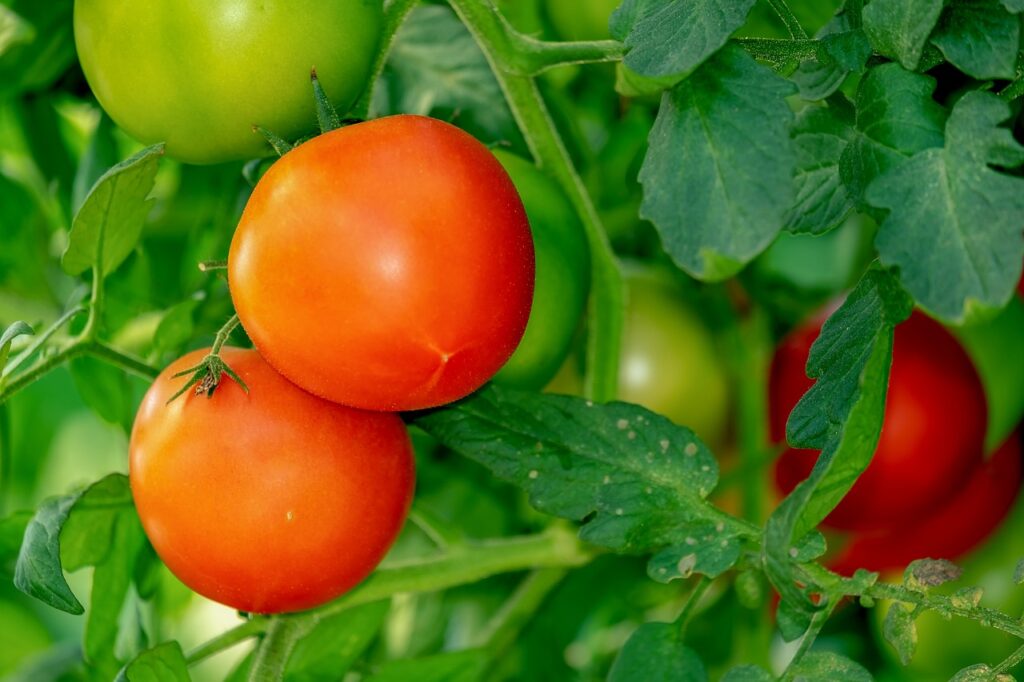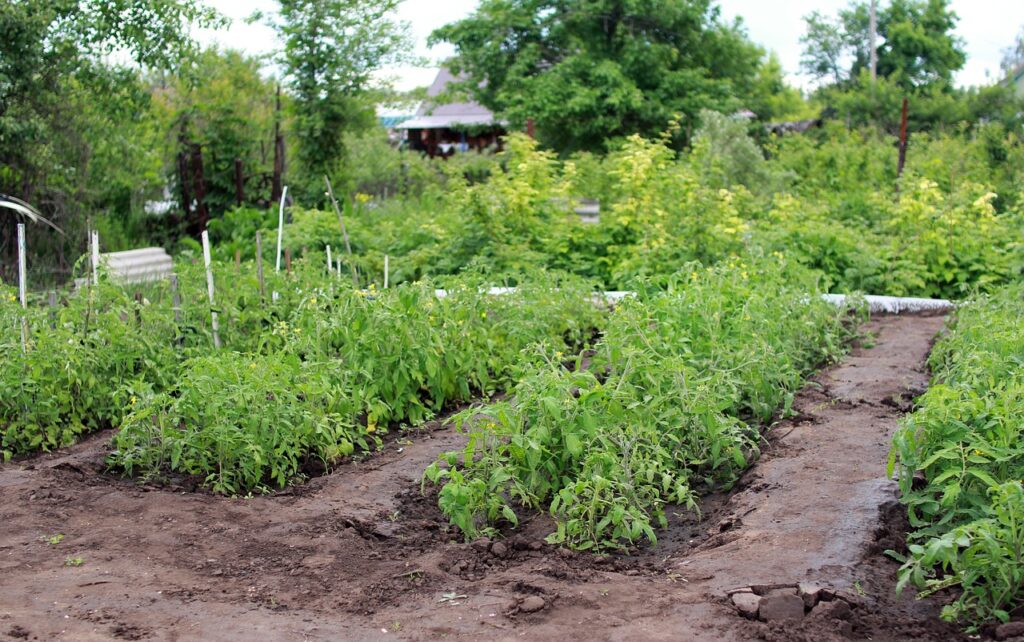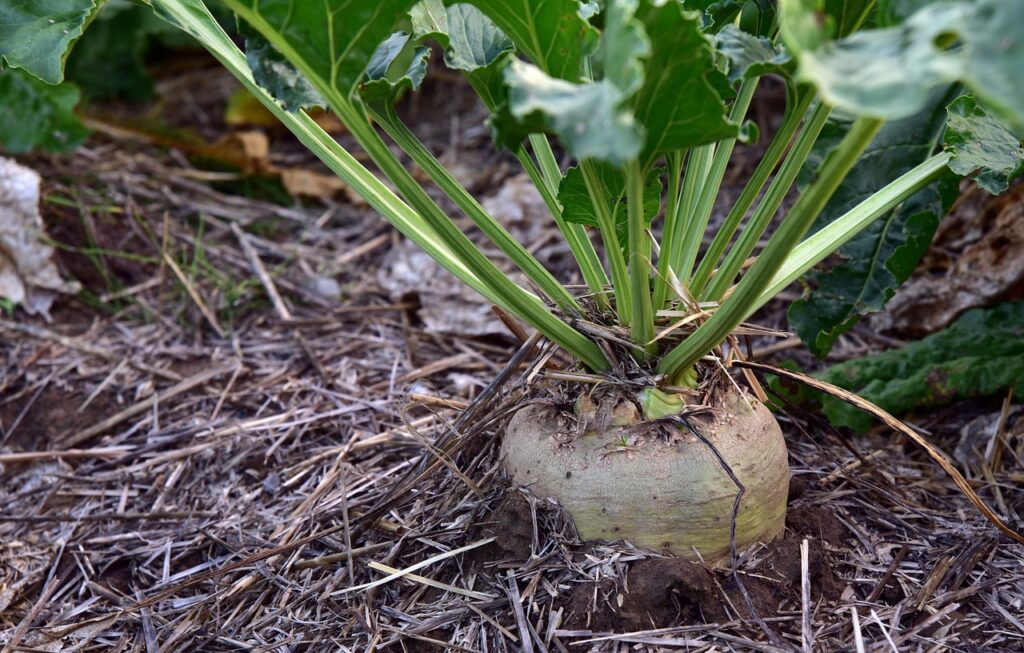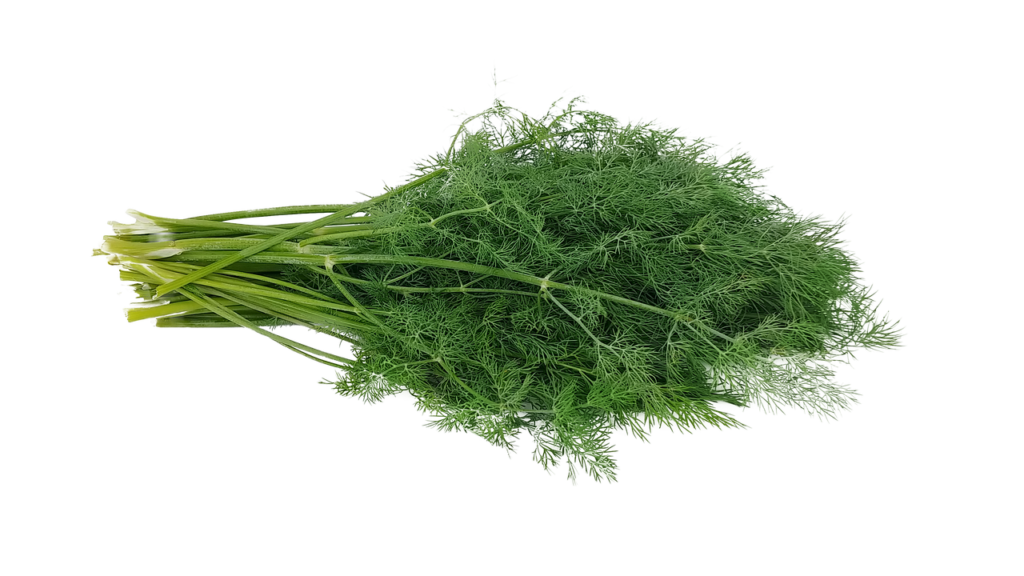Tomatoes for beginners is a useful how-to and will go a long way in helping you succeed with this popular, vegetable garden stalwart. When summer approaches, it’s time to plan for your annual tomato crop. Few things can beat sun-ripened, juicy tomatoes, fresh off the vine. Growing tomatoes might seem effortless, but there are several things to keep in mind before planting them. In this blog, we’ll discuss when and how to plant tomatoes for optimal growth and harvest.
When to Plant Tomatoes – The Basics Covered
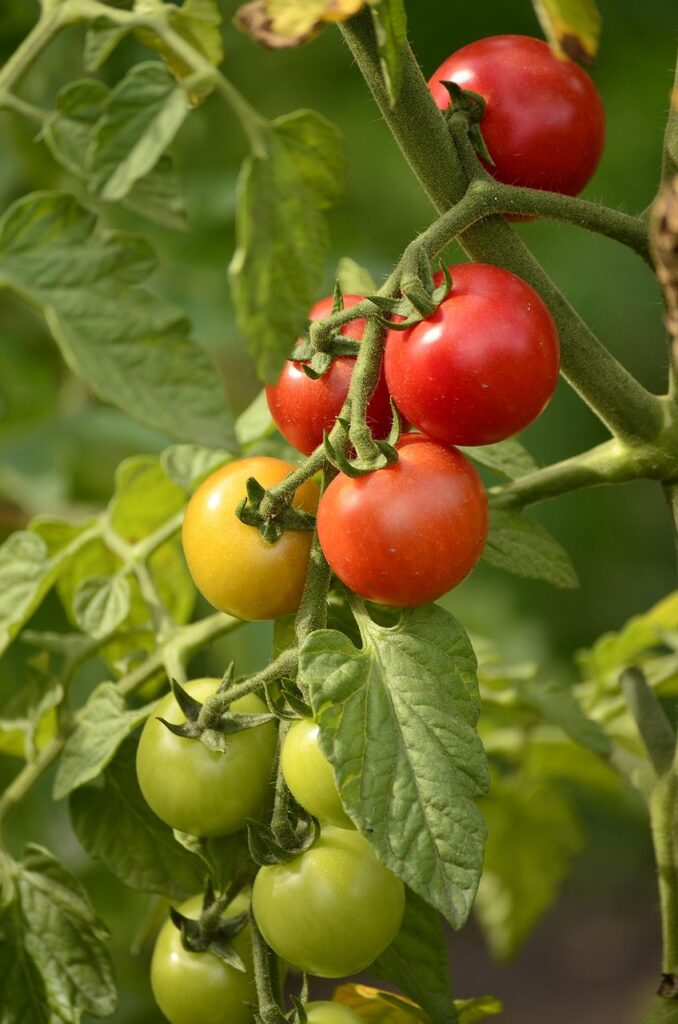
The key to a successful tomato harvest is to plant your tomatoes at the right time. Tomatoes are warm-season plants that thrive when the soil temperature is between 60-85 degrees Fahrenheit. It is important to wait until the danger of frost has passed before planting tomatoes, as they are very sensitive to cold temperatures and will not survive a frost.
For beginners, it is recommended to plant your tomatoes in late spring, once the soil has warmed up and the threat of frost has passed. You can expect this around mid to late May in most regions, do your research though as your area may vary. However, it is important to note that the exact timing may vary depending on your location and climate. You can check with your local agricultural extension office or garden center for specific recommendations for your area.
As an Amazon and ebay Affiliate we may earn a commission off any purchases made through our links. This won’t affect the price you pay.
Start them indoors
If you are eager to get a head start on your tomato plants, you can start them at home, indoors from seeds about 6-8 weeks before your last frost date. This will give them a chance to grow and develop before being transplanted into your garden. When planting tomatoes from seed, it is important to use a good-quality seed starting mix and provide ample light and warmth for your seedlings to thrive.
Transplanting your tomato seedlings into the garden should be done carefully to avoid damaging the delicate roots. Make a hole that is a little larger than the root ball of the seedling and gently place the plant into the hole. Make sure to bury the plant up to the first set of leaves to encourage strong root development.

After planting your tomatoes, it is important to provide them with the right care and attention to ensure a successful harvest. Tomatoes need plenty of sunlight to grow and develop properly, so make sure to plant them in a location that receives at least 6-8 hours of sunlight each day. Basically, a full sun position.
Tomatoes also need regular watering to keep the soil consistently moist, but not waterlogged. It is best to water your tomatoes in the early morning to allow the leaves to dry before nightfall, as wet leaves can lead to disease.
Fertilizing your tomato plants is also important to promote healthy growth and a bountiful harvest. You can use a balanced fertilizer formulated for vegetables, or you can opt for organic options such as compost or manure. Be sure to follow the recommendations on the fertilizer packaging to avoid over-fertilizing, which can harm your plants. More about this is covered below.
Support and prune
As your tomato plants grow, they may need support to keep them upright and prevent the fruit from touching the ground. You can use stakes, tomato cages, or trellises to support your tomatoes as they grow. It is best to install the supports when you first plant your tomatoes to avoid damaging the roots later on.
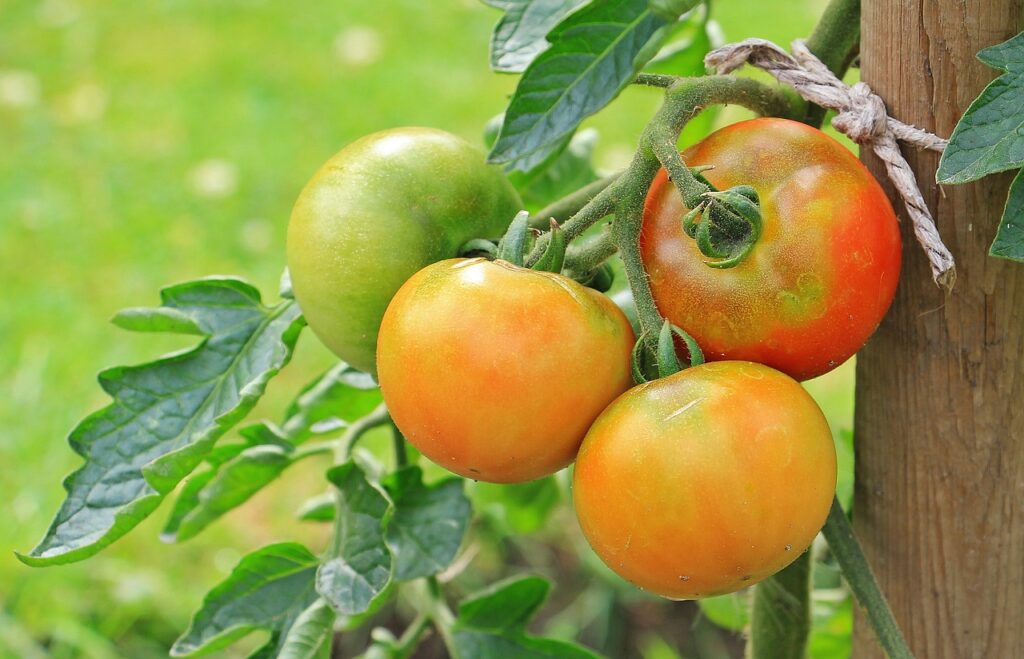
To encourage healthy fruit production, it is also important to prune your tomato plants regularly. Remove any suckers that develop in the leaf axils to improve air circulation and prevent overcrowding. Pruning will also help your plants focus their energy on producing fruit rather than excess foliage.
As your tomatoes begin to ripen, it is important to harvest them at the right time to enjoy the best flavor. Tomatoes should be picked when they are fully ripe but still firm to the touch. Try to avoid picking tomatoes whilst they are green, they may ripen but it’s likely to affect the taste.
How to Plant Tomatoes
Now that you know when is the best time to plant tomatoes let’s discuss how to plant them.
- Start by choosing a suitable location. It’s all about sunlight, they need at least six hours of direct sunlight each day. They also need soil that drains water well and has a pH level between 6.0 and 7.0. Avoid planting them in areas that have previously grown nightshade plants like eggplants, peppers, or potatoes.
- Prepare the soil. Loosen the soil to a depth of 12 inches with a garden fork or tiller. Add a layer of organic matter such as compost or aged manure and mix it in. If your soil is sandy, add peat moss or vermiculite to improve moisture retention. On the other hand, if it’s heavy clay, add perlite or coarse sand to improve drainage.
- Dig planting holes or trenches. Make a hole that is about twice the size of the root ball. Add a tablespoon of slow-release fertilizer, a handful of bone meal, and a tablespoon of Epsom salt to each hole to boost growth, root development, and ensure that the plants get the right amount of magnesium.
- Plant the tomatoes. Remove the lower leaves carefully, and plant the tomato seedlings deeply in the hole or trench. The bottom two-thirds of the plant should be underground. Cover the roots and pat down the soil gently around the stem.
- Add support. Once you’ve planted the tomatoes, add support, such as a stake, trellis, or cage, to prevent the plants from falling over or breaking under the weight of fruits.
- Water them adequately, deeply and regularly, ensuring that they receive at least 1 inch of water per week. Water at the base of the plant, where plant meets ground. Otherwise you risk the spread of diseases.

Starting Your Plants Indoors
By starting your tomatoes from seeds indoors, you have more control over the growing conditions and can ensure that your plants are strong and healthy before transplanting them into the garden. Here are some tips for starting tomatoes indoors for beginners.
First, you will need to gather your supplies. You will need seeds, seed starting mix, trays or containers, a light source, and water. Choose a good quality seed starting mix that is lightweight and sterile to prevent disease. You can use trays, peat pots, or other containers to start your seeds in. Make sure, any container you use, has sufficient drainage holes to prevent waterlogging.
The first step is filling your containers with the seed starting mix. Always leave a space at the top – about half an inch should do. Moisten the mix well before planting your seeds. Plant your tomato seeds about ¼ inch deep, spacing them about 2 inches apart. Cover the seeds lightly with more seed starting mix and water gently.

Location, location, location
Find a warm, sunny location for your containers, or you can place them under grow lights. Tomatoes need plenty of light to grow well, so make sure they receive at least 12-14 hours of light each day. You can use a timer to regulate the light if necessary.
Keep the soil consistently moist but not waterlogged. Be very mindful of overwatering, this will almost certainly, lead to root rot and other issues. It is best to water from the bottom by placing the containers in a tray of water and allowing the mix to soak up the water from below.
Once your tomato seeds have germinated and the seedlings have developed their first set of true leaves, it is time to transplant them into larger containers. Gently lift the seedlings, out from their original containers, being careful not to damage the delicate roots and don’t pull too hard on the plant. Plant them in larger containers filled with potting soil, burying the seedlings up to their first set of leaves to encourage strong root development.
As your tomato seedlings continue to grow, they will need to be fertilized to provide them with the nutrients they need to thrive. You can use a balanced liquid fertilizer diluted to half strength once a week to feed your plants. Always read and follow the instructions on the fertilizer packaging to avoid over-fertilizing. Over-fertilizing can burn, damage or kill plants.
Harden off
One important step in the process of starting tomatoes indoors is hardening off the seedlings before transplanting them into the garden. Hardening off is the process of gradually acclimating your seedlings to the outdoor environment to prevent transplant shock.
To start hardening off your seedlings, place them outdoors in a sheltered, shaded area for a few hours each day, gradually increasing the amount of time they spend outside. This process should take about 7-10 days. Make sure to bring the seedlings indoors at night to protect them from cold temperatures.
Once you have gone through the process and your seedlings have been hardened off, they are ready to be transplanted into the garden. Choose a sunny location with well-drained soil for your tomato plants. Create a hole that is a little larger than the root ball of the seedling and gently place the plant into the hole. Bury the plant up to the first set of leaves to encourage strong root development. Press down gently but firmly to anchor the seedling. Water your seedlings well after this.
After transplanting your seedlings into the garden, continue to provide them with the care and attention they need to thrive. Water regularly, prune as needed, and provide support for your plants as they grow.
Identifying and treating pests and diseases
Common pests on tomato plants
- Aphids: Aphids are tiny, soft-bodied insects that feed on the sap of tomato plants, causing leaves to curl and yellow. To treat aphids, you can hose them off with a strong stream of water or use insecticidal soap. Ladybugs, being natural predators of aphids, are often used to help keep their populations in check.
- Tomato hornworms: Tomato hornworms are large, green caterpillars that can strip foliage from tomato plants. To control tomato hornworms, handpick them off your plants or use Bacillus thuringiensis (Bt), a natural bacterium that targets caterpillars.
- Whiteflies: Whiteflies are small, white insects that feed on the undersides of tomato leaves and excrete a sticky substance called honeydew. To control whiteflies, you can introduce natural predators like ladybugs or lacewings, or use insecticidal soap.
- Cutworms: Cutworms are larvae of moths that cut through tomato plant stems at soil level, causing plants to wilt and die. To prevent cutworm damage, you can create a physical barrier around the base of your plants using cardboard collars or aluminum foil.
- Spider mites: Spider mites are tiny pests that suck sap from tomato leaves, causing stippling and webbing. To control spider mites, zap them with a strong stream of water or use insecticidal soap.

Common diseases on tomato plants
- Early blight: Early blight is a fungal disease that causes dark lesions on tomato plant leaves and stems. To treat early blight, you can remove and destroy infected plant material, avoid overhead watering, and apply a copper fungicide.
- Late blight: Late blight is a fungal disease that causes dark, water-soaked lesions on tomato plant leaves and fruit. To treat late blight, you can remove and destroy infected plant material, improve air circulation around your plants, and apply a copper fungicide.
- Powdery mildew: Powdery mildew is a fungal disease that appears as white, powdery patches on tomato plant leaves. To treat powdery mildew, you can remove and destroy infected plant material, improve air circulation, and apply a sulfur-based fungicide.
- Fusarium wilt: Fusarium wilt is a soilborne fungal disease that causes tomato plant leaves to yellow and wilt. To treat Fusarium wilt, you can plant resistant tomato varieties, rotate your crops, and avoid overwatering.
- Verticillium wilt: Verticillium wilt is another soilborne fungal disease that causes tomato plant leaves to yellow and wilt. To treat Verticillium wilt, you can plant resistant tomato varieties, rotate your crops, and maintain good soil health.
How to prevent pests and diseases
- Practice good garden hygiene: Keep your garden clean and tidy by removing plant debris and weeds, which can harbor pests and diseases.
- Rotate your crops: Avoid planting tomatoes in the same location year after year to reduce the buildup of soilborne pathogens.
- Provide adequate air circulation: Prune your tomato plants to improve air circulation, which can help prevent the development of fungal diseases.
- Monitor your plants regularly: Check your tomato plants frequently for signs of pests and diseases, and take action promptly to prevent further damage.
- Use organic and natural remedies: Consider using organic and natural pest and disease control methods, such as insecticidal soap, neem oil, and beneficial insects, to protect your tomato plants without harmful chemicals.
Feeding tomatoes, for beginners.
Feeding your tomato plants is essential for their growth, development, and productivity. A well-balanced feeding program can provide the nutrients your plants need to thrive and produce a bountiful harvest. For beginners, understanding how and when to feed tomato plants from seedling to adult plant is crucial for successful gardening.
When your tomato seedlings have developed their first set of true leaves, it is time to start feeding them. Seedlings have limited nutrient reserves in their seed starting mix, so they will benefit from a gentle feeding to support their growth.
- Dilute liquid fertilizer: Choose a balanced liquid fertilizer specifically formulated for seedlings, diluted to half strength. This will provide the necessary nutrients without overwhelming the young plants.
- Feed once a week: Start feeding your tomato seedlings once a week to ensure they receive a consistent supply of nutrients as they grow.
- Watering: Water your seedlings with the diluted fertilizer solution, making sure not to overwater them.
Feeding Young Plants:
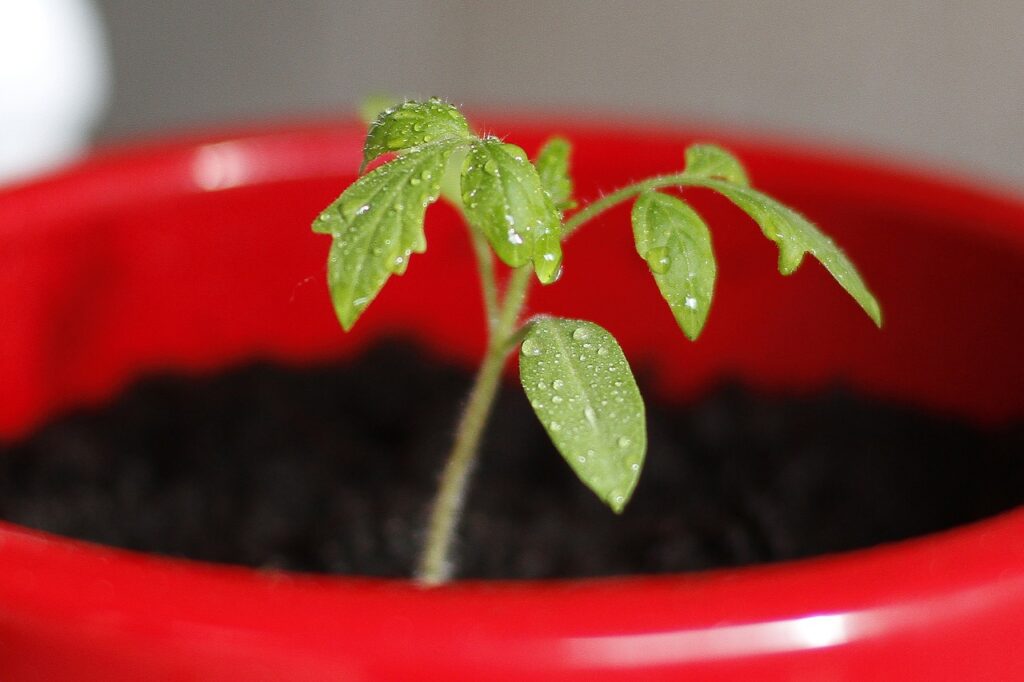
As your tomato plants grow and develop, their nutrient needs will increase. Transitioning from seedlings to young plants requires adjusting your feeding program to provide adequate nourishment for healthy growth.
- Choose a balanced fertilizer: Select a balanced fertilizer with equal parts of nitrogen, phosphorus, and potassium (N-P-K). This will support overall plant growth and encourage fruit production.
- Feed every two weeks: Increase the frequency of feeding to every two weeks. This should meet the growing demands of young tomato plants.
- Monitor plant health: Keep an eye on your plants’ overall health and growth. Adjust the feeding schedule or nutrient levels if you notice any issues such as yellowing leaves or slow growth.
Feeding Mature Plants
Once your tomato plants reach maturity and start setting fruit, they will require a steady supply of nutrients to support fruit development and ripening. A tailored feeding program for mature plants can ensure optimal growth and fruit production.
- Choose a fertilizer for fruiting plants: Switch to a fertilizer specifically formulated for fruiting plants, with higher potassium levels to support fruit development.
- Feed every two weeks: Continue feeding your mature tomato plants every two weeks to maintain their nutrient levels and support ongoing growth and fruit production.
- Watering: Water your plants before applying fertilizer to help distribute the nutrients evenly and avoid root burn.
- Monitor fruit development: Watch your plants for signs of fruit development and adjust your feeding program if needed to support healthy fruit growth and ripening.
Additional Tips for Feeding Tomato Plants
- Supplement with organic matter: Consider supplementing your feeding program with organic matter such as compost or aged manure to improve soil fertility and structure.
- Soil pH: Test your soil pH regularly to ensure it falls within the optimal range for tomato plants (6.0-6.8). Adjust the pH as needed to promote nutrient uptake.
- Mulching: Apply a layer of organic mulch around your tomato plants to retain moisture, regulate soil temperature, and provide additional nutrients as it breaks down.
- Consistent watering: Maintain consistent watering practices to prevent nutrient deficiencies and ensure proper nutrient uptake by the plants.
Tomatoes are a must when vegetable gardening, and for a good reason. They are delicious, easy to grow, and healthy. Knowing when and how to plant tomatoes can help ensure a successful growing season. So, before you plant those tomatoes, be mindful of the location, soil preparation, seedlings or seeds, support, and watering. Grow in the ground or in raised beds, the choice is yours.
As an Amazon and ebay Affiliate we may earn a commission off any purchases made through our links. This won’t affect the price you pay.

